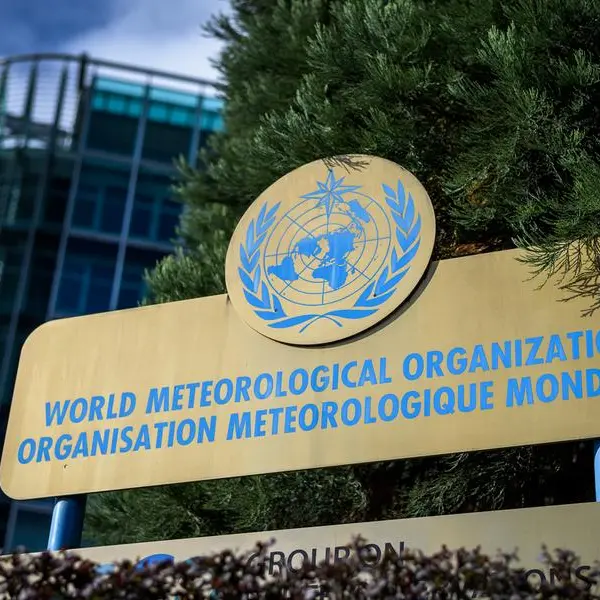PHOTO
Romantic couple looking out from boat at Dubai marina, United Arab Emirates
Being a partner and being a parent are probably two of the most fundamental jobs that we have in life. Ironically, we have no formal education or training on how to do either of them.
Often, we model how to be a partner and parent based on our first families. The interactions we witness and experience from the adults in our lives growing up as children deeply affect how we function in these roles later in life. But what’s to guarantee that those relationship models were the healthiest?
That’s where Charlotte Spurway, a British psychologist who has an established online practice based in Dubai, comes in. She delves into the different attachment styles that define the way we function as partners, parents, and in other relationships in our lives.
“My focus is to help people dive into the Integrated Attachment System which we all hold within ourselves,” she said. “Clients who come to me as couples are going through a tough time; they’re experiencing the same arguments over and over again, and may be on the brink of divorce. Singles also come to me looking to examine their relationship history before becoming a partner once again.”
Among the people she treats, some face communication challenges because their cultural backgrounds are vastly different. Others are expats who have repatriated and find the move back home with their kids taking a strain on their family dynamics. There are also third-culture kids, adults who were born and raised in the Gulf though not culturally from the region themselves, who have left Dubai and are challenged with navigating different relationship styles in different countries.
Spurway provides the education people usually don’t receive to help them understand why they act the way they do in relationships. Attachment styles are a response to what was missing in our relationships in our younger years. Knowing that means understanding what you need to feel securely attached, and that can make a world of a difference.
Working in Dubai has been an eye-opening experience for Spurway as well. The most common couples she works with are those who come to her after a third party has been involved.
“Dubai is a hugely globalised and materialistic city. And I often wonder if that consumerism has trickled down into how we consume people, too. Like the way we consume material goods, people dive into relationships or are tempted out of committed relationships for the pleasure of instant gratification. After the honeymoon stage is over or when a long-term relationship gets too comfortable, I see infidelity happening when one partner seeks the next oxytocin rush that only a new partner can bring – like a shiny new toy.”
Couples can survive infidelity, but only by understanding what drives these impulses to unhealthy attachments to prevent it happening again, and by rebuilding trust.
She has also done research on how expatriatism in Dubai affects romantic attachment.
“Almost 97 per cent of people living in Dubai are non-local, and research shows that the more you're away from your home of origin — whether you're a migrant, an expat, a refugee, whatever it might be — you have perceived danger within the new environment because you’re in unfamiliar territory which heightens your senses for survival.
“This can create more insecurity with how we attach to people because you either need people around to create safety in a tribe or you're pushing people away for self-protection. So how we interact romantically can mean we keep people at arm's length: people who continually have short-term, superficial relationships and don’t form meaningful long-term connections, or people who are overly-attached and dependant — they’re the ones who are clingy and constantly messaging and have that level of neediness above normal levels of proximity to feel safe.
“It all comes down to the question of, ‘Do I feel truly safe?’. Living in a city with a huge mix of cultures and having one foot in the door and one foot out can wreak havoc on your ability to securely form attachments.”
Spurway encourages people to consider their own attachment style, either on their own or with a professional, if they’re serious about improving any relationship in their life. She notes that attachment styles and behaviour patterns creep into our professional relationships and environments as well.
“Whatever relationship you’re looking to explore, if you don't have your 50 per cent of it sorted, you may end up sabotaging it. Often clients come to me when it’s too late to save a relationship or when there’s a lot of harm already done,” she said.
“I think that’s because there is still this taboo around therapy. So it’s helpful if you reframe the experience. Think of it as just a chat and you’re coming to a therapist for educational purposes. This will open the door to managing issues pre-emptively instead of going there because there’s already an issue.
“I’m hoping to change perceptions in that regard because everyone deserves to be and be with a securely attached person in a healthy relationship.”
Charlotte Spurway, a British psychologist who has her own online practice based in Dubai, explains the different attachments styles that define how we function as partners, parents, and in other relationships in our lives.
>> Secure attachment: Individuals with a secure attachment style typically feel comfortable with intimacy and independence in their relationships. They are able to trust their partners, express their emotions openly, and seek support when needed. Securely attached individuals generally have positive views of themselves and others.
>> Anxious-preoccupied attachment: People with an anxious-preoccupied attachment style often fear rejection or abandonment in their relationships. They may seek excessive reassurance from their partners, worry about their partner’s feelings or intentions, and experience heightened emotional responses to relationship issues. They may also struggle with low self-esteem and a need for external validation.
>> Dismissive-avoidant attachment: Individuals with a dismissive-avoidant attachment style tend to prioritise independence and self-reliance over intimacy in their relationships. They may downplay the importance of close connections, avoid emotional vulnerability, and have difficulty expressing their feelings or needs. They may also distance themselves from others to protect against perceived vulnerability or rejection.
>> Fearful-avoidant (disorganised) attachment: This attachment style combines elements of anxious-preoccupied and dismissive-avoidant attachment patterns. Individuals with a fearful-avoidant attachment style may desire close relationships but fear rejection or betrayal. They may alternate between seeking intimacy and withdrawing from it, experiencing internal conflicts and confusion in their relationships.
Which one do you relate to?
Copyright © 2022 Khaleej Times. All Rights Reserved. Provided by SyndiGate Media Inc. (Syndigate.info).





















